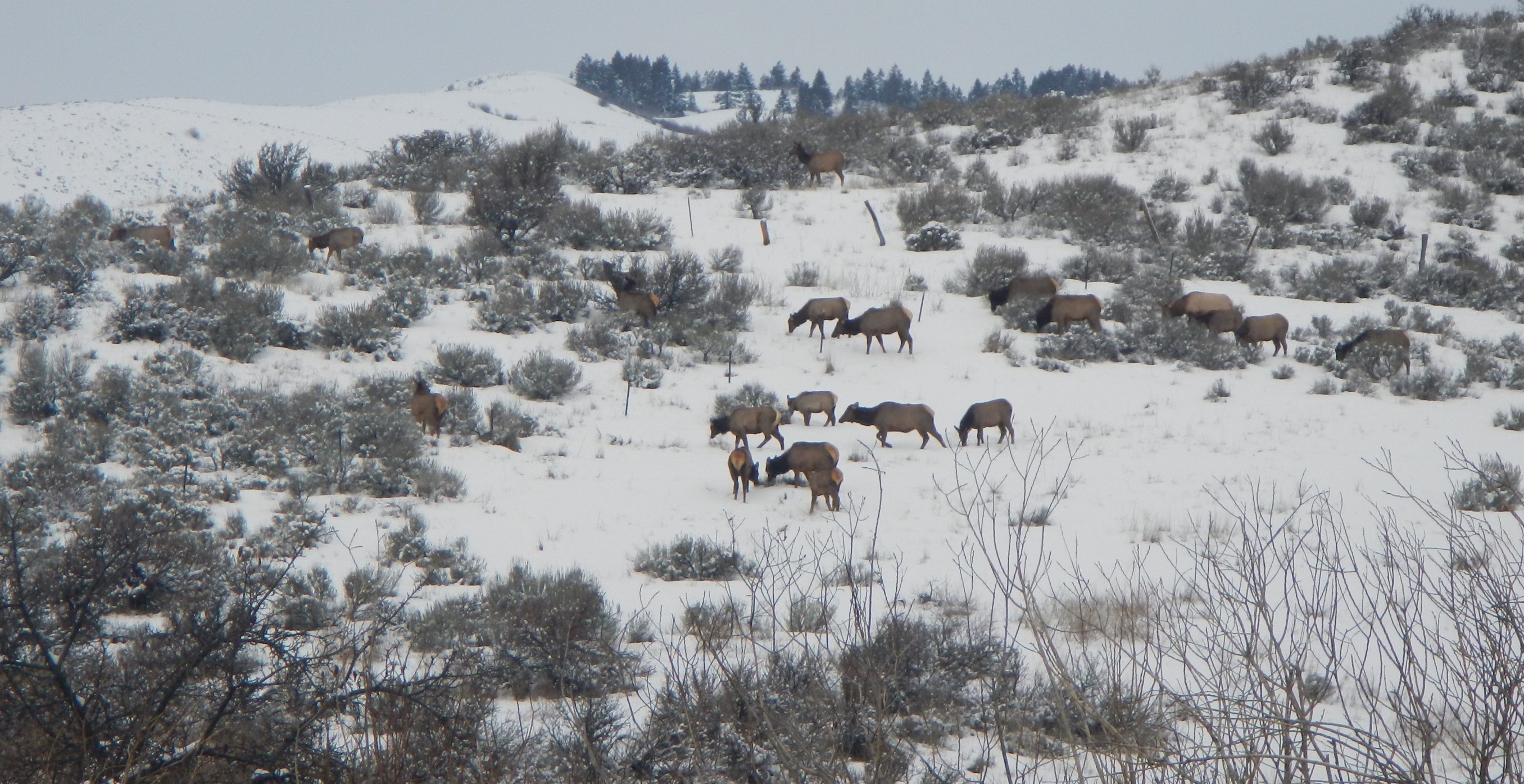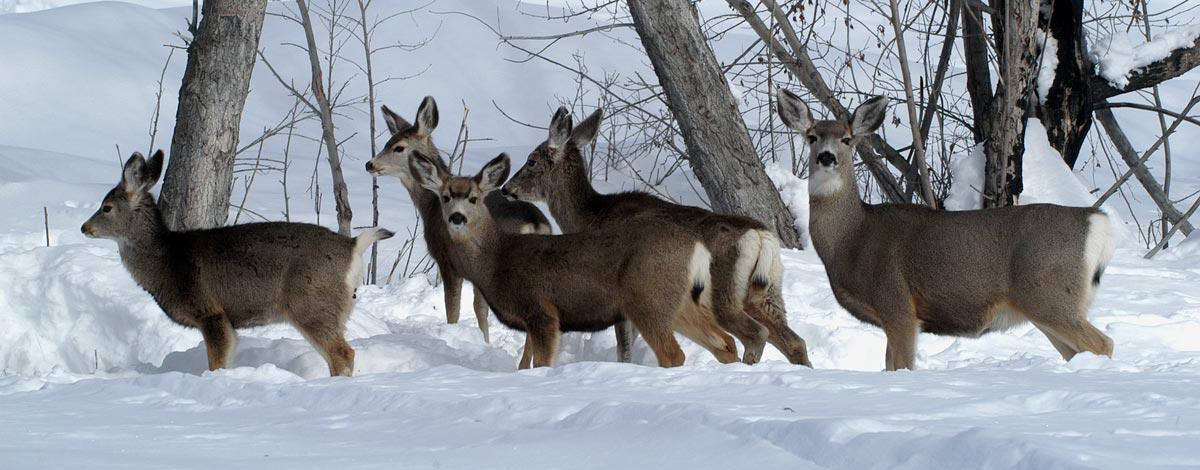When it’s the “dead of winter,” it’s important that we consider our effects on wildlife so the term doesn’t apply too literally, which means people should avoid disturbing wintering animals. When animals are forced to burn extra calories to avoid people, it can make a life-or-death difference, especially for fawns and calves trying to survive their first winter.
Most big game animals migrate to lower elevations where winter weather is milder and more forage is available than in the high country. That often puts deer, elk and other big game animals fairly close to people.

These lower areas are commonly known as "winter range" where dozens to thousands of animals congregate for several months. Forage is limited on winter range, and animals usually can’t meet their full nutritional needs there, so it’s important for them to conserve energy.
Animals with abundant body fat that they accumulated earlier in the year can typically survive most winters, but fat reserves even in the healthiest animals are limited and can be depleted, and younger animals are most susceptible to malnutrition and winter kill.
A way to avoid disturbing wintering wildlife is simply give them plenty of space when you’re outdoors.
"Enjoy them from a distance, but if your actions cause them to move, you're too close," said Daryl Meints, Fish and Game’s state deer and elk manager.
Avoiding boom and bust cycles
While big game animals have endured Idaho's winter climate for eons, their populations tend to be cyclical. Herds can flourish following mild winters, or consecutive mild winters, but can also crash during a harsh winter, or even a cold, wet spring.
Keeping herds healthy and sustainable
Quality habitat on winter-range and minimal disturbances are keys to maintaining healthy and abundant big game herds. Wildlife managers try to ensure big game herds remain in sustainable numbers, and in suitable areas.
Supplemental winter wildlife feeding is usually done only during emergency situations when abnormal weather threatens to cause massive die offs, or struggling wildlife moves off traditional wintering grounds and causes extensive damage to private property. If big game animals congregate on agriculture lands and eat feed intended for livestock, it creates financial hardship for ranchers.
Fish and Game has winter feeding advisory committees throughout the state that provide timely information to wildlife managers, and committees advise if winter weather conditions meet criteria to trigger emergency feeding.
These committees, along with wildlife managers, watch for extreme conditions, such as multiple consecutive days of sub-zero temperatures, or snow depths of 18 inches or deeper on south-facing slopes.
But other variables may affect the decision. Having 18-inches of snow with mild temperatures early in winter may not trigger feeding, but snow crusting in late winter - a condition when snow hardens and makes foraging difficult - might require it.
Regardless of the severity of winter, some animals will naturally perish. That's an inescapable part of nature, and animals too stressed from winter can die even when food is available.
Fish and Game’s wildlife managers strive to keep big game herds healthy and abundant, and the simple act of leaving wildlife undisturbed on winter ranges can help make that happen.

